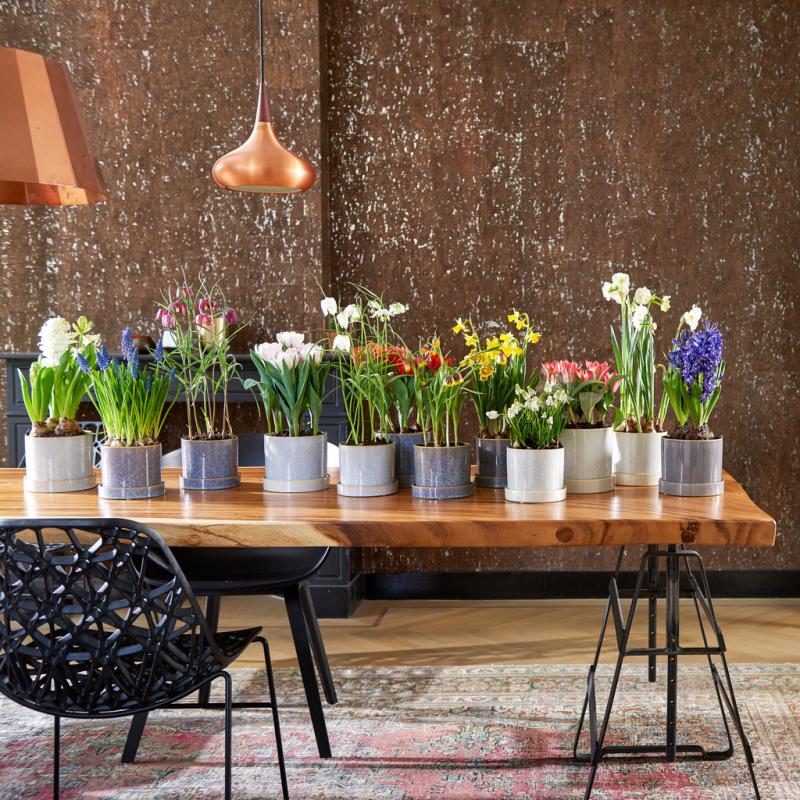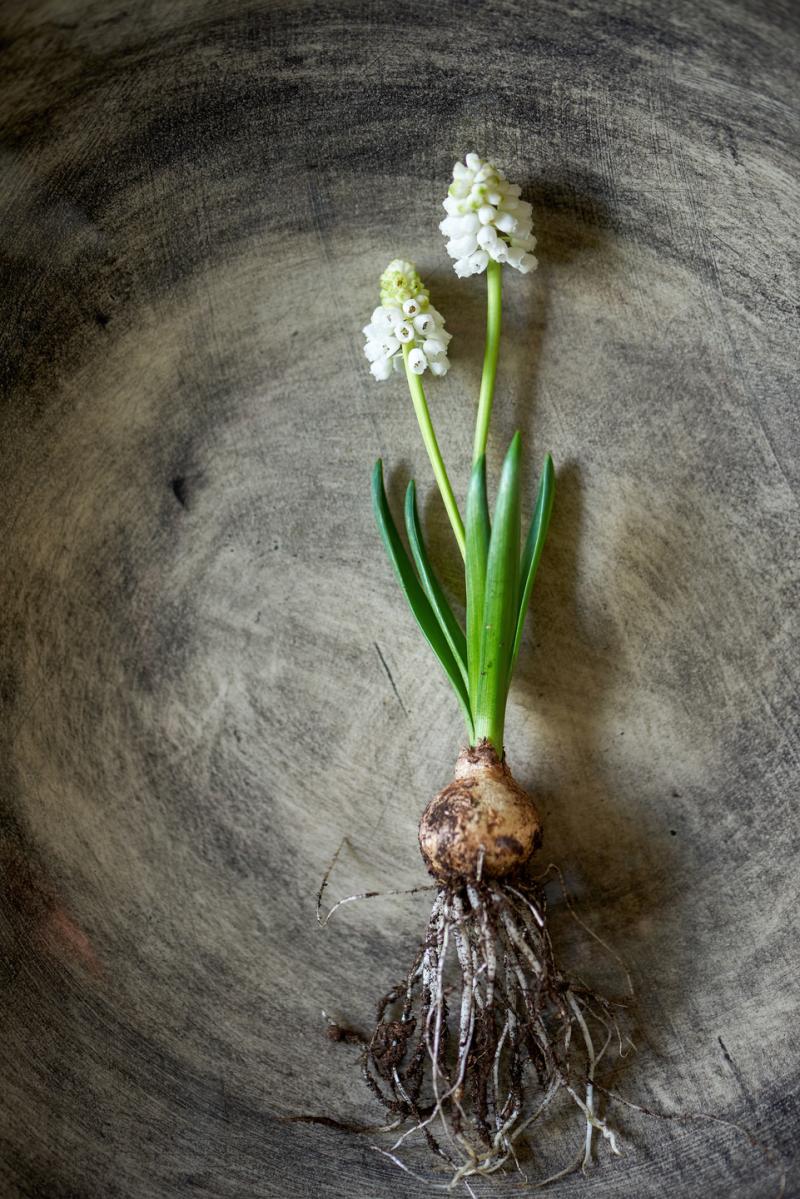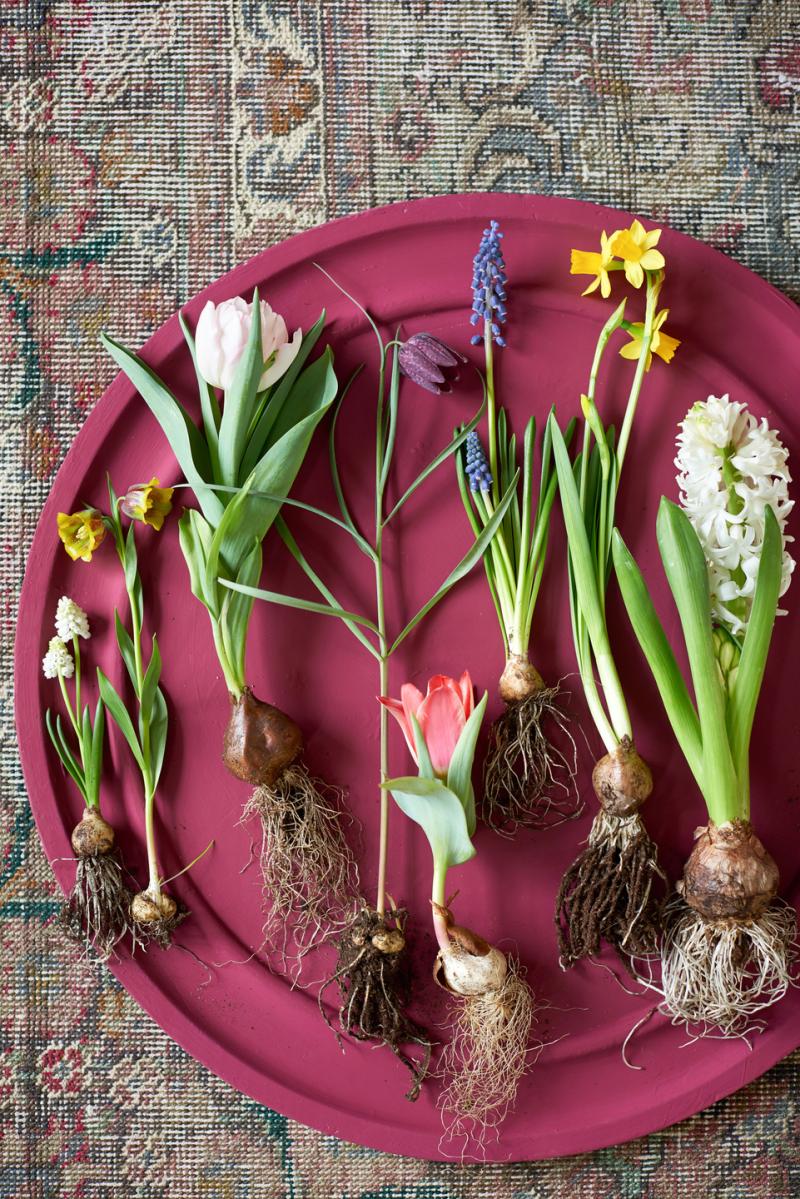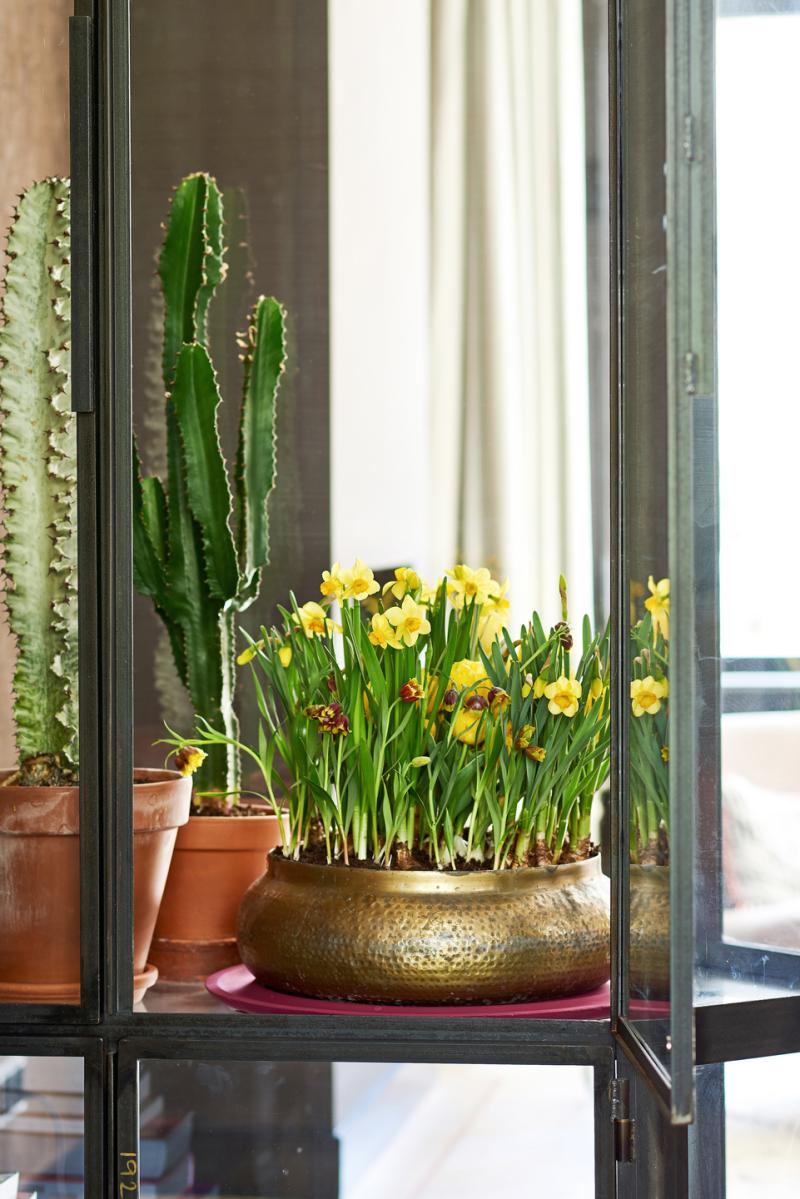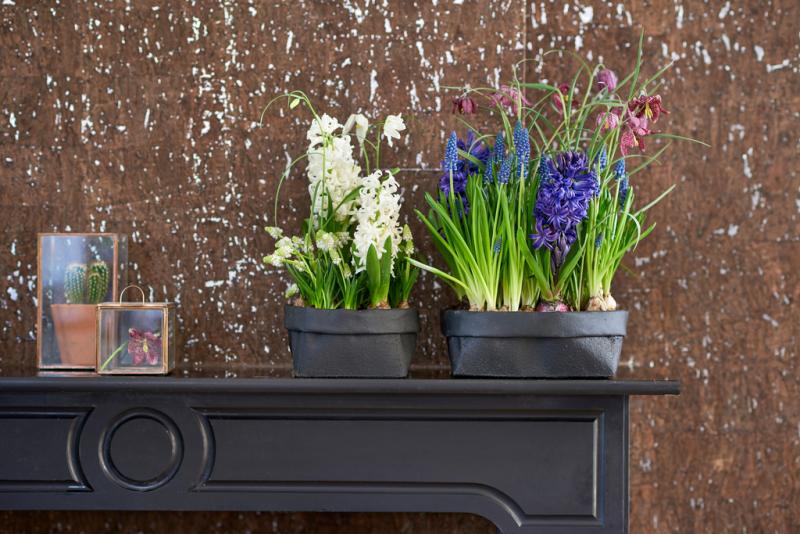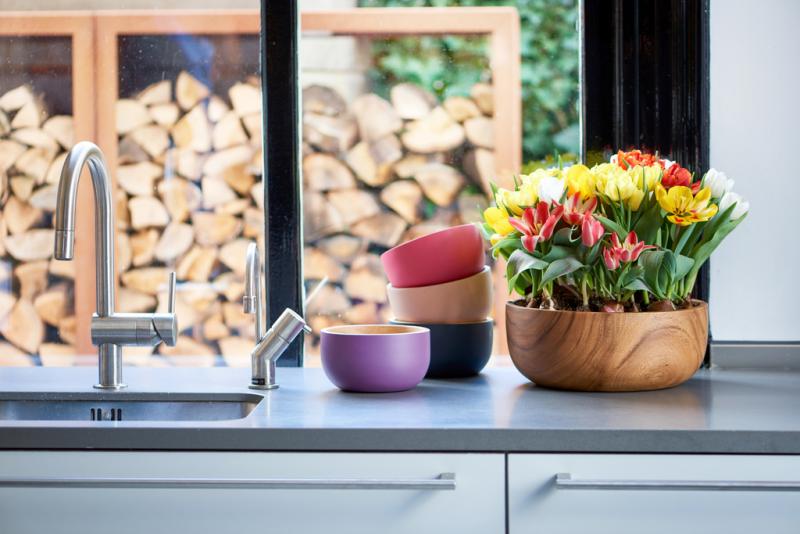March 2018: Springtime bulbs Houseplants of the Month
The story of Springtime bulbs
Nothing create a spring mood in store and in the home like potted bulb plants. They offer convenience for the consumer, are almost guaranteed to flower and radiate lots of energy thanks to all the sprouting bulbs. Five stars in the potted bulb category have been selected for March to celebrate the start of Spring. Narcissi, grape hyacinths (Muscari), tulips, hyacinths and fritillaries or Crown Imperials (Fritillaria) will flower quickly and radiantly in the warm conditions indoors, thanks to the growers who have already subject to the bulbs to a cold and warm period required to activate a bulb. In that way the Springtime bulbs produce flowers even though it’s really too early.
Origin
The Springtime bulbs have a variety of origins. Tulips originate from Turkey. Hyacinths come from the region east of the Mediterranean (Lebanon, Syria, Iran, Iraq). Narcissi spread from south-west Europe across the entire continent, whilst fritillaries are native to Europe and Western Asia.

- Larger bulbs are higher quality and offer the most abundant and largest flowers.
- Check that the plants are free of pests and diseases.
- A potted harbinger of Spring must be well rooted and may not be loose in the pot.
- Dried buds or leaf tips are a sign of too little moisture during cultivation; mould on the bulbs or the soil indicates too much moisture.
- A well-developed bud that is already showing some colour has the best chance of emerging attractively.
Range
Potted tulips are available in a range which extends from specialist botanical species which remain short and small through to fabulous cultivars with different flower shapes, such as single and double flowered, fringed (crispa) and parrot tulips. The flower can be single-coloured or multicoloured, flamed or striped.
Hyacinths are available in classic colours such as pink, white and blue, but also novel shades such as purple, salmon and pale yellow. The individual flowers on the stem are called ‘nails’. The more nails, the more richly the plant flowers.
Potted narcissi are offered as both scented spray narcissi and classic trumpets, as well as varieties with double flowers. Most common colours are yellow and white, whilst bicoloured narcissi with salmon and orange in the flower are becoming more widespread.
Grape hyacinths derive their name from the grape-like flowers, which also come in white, lilac, purple and pink nowadays. The popular potted bulbs have a light musk fragrance, which is reflected in the scientific name Muscari.
Potted Fritillaria resembles a plover's egg (F. meleagris) with spotted flowers that hang on the stems like eggs. F. persica is taller and more substantial, with a host of purple flowers at the top. Crown Imperials (F. imperialis) have long stems crowned with strongly scented hanging flowers.
Care tips for consumers
- The cooler the spot in which the Springtime bulbs are placed indoors, the longer they will flower.
- Regular watering helps the bulb to bloom, but too much water will cause it to rot.
- There’s no need to feed - the nutrients are already in the bulb, which makes the Springtime bulbs 'easy care'.
Sales and display tips for Springtime bulbs
The Springtime bulbs can readily prompt impulse purchases. For example style them with matching image material in the background and repeat them in various places around the store. Create ready-made baskets, containers and bowls to make life easy for the customer. And supplement the display with additional Spring accessories for an appealing and atmospheric arrangement. Add some birdsong, and the association with spring will be irresistible.
Images of Springtime bulbs
You can download and use the images below free of charge if you credit Thejoyofplants.co.uk
Springtime bulbs poster
You can download the poster using the link below.

